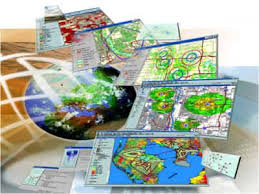Application of geographical information system for farm mechanization education and training
Keywords:
Farm mechanization; Smart farming; Space technological; Geographical information system; Precision farmingAbstract
Precision farming is managing each crop production input such as fertilizer, water, lime, herbicide, insecticide and seed on a site-specific basis to reduce waste, increase profit and maintain the quality of the environment. Without some remarkable enabling assisting technologies, the individual treatment of each plant is impossible and the concept of precision farming would not be feasible. Based on the trip, we can gain more information about the new technology that applies nowadays in agriculture. By using remote sensing that transmitted data from GPS, we can used to determination of generic object type, character and property as well as it’s abstract meaning. Besides, the application of remote sensing has been used in soil electrical conductivity sensor which used for show the variability of soil properties in detail and rapidly using simple equipment with less cost and labor force. Action maps will then be produced for farmers to apply fertilizers at different rates according to the delineated zones.References
Aimrun, W., Amin, M.S.M., Ezrin, M.H., Mastura, M., 2011. Paddy soil properties and yield characteristics based on apparent electrical conductivity zone delineation for a humid tropical rice farm. Afric. J. Agr. Res., 6 (23), 5339-5350.
Aimrun, W., Amin, M.S.M., Ahmad, D., Hanafi, M.M., Chan, C.S., 2007. Spatial variability of bulk soil electrical conductivity in a Malaysian paddy field: key to soil management. Padd. Wat. Environ., 5(2), 113-121.
Amin, M.S.M., Aimrun, W., Eltaib, S.M., Chan, C.S., 2004. Spatial soil variability mapping using electrical conductivity sensor for precision farming of rice. Inter. J. Engin. Technol., 1(1), 47-57.
FAO, 1994. Proceedings of Expert Consultation on Irrigation Water Delivery Models. FAO Water Reports, No.2.
Hudzari, M.R., 2012. Computer Application In Agriculture And Mechanization Education. Inter. J. Wire. Inform. Net. Busin. Inform. Net., I- VI (ISSN No : 2091-0266).
Hudzari M.R., Roslan, S., Mustafa, K.A., Zainuddin, M.F., Abbas, Z., 2011. Development of non-destructive device for determination of alkaloid level in Dioscorea hispida. Inter. J. Mach. Intell., 3(5), 181-186.
Hosiery, M.R., Wan Ishak, W.I., Noorman Masrek, M., 2010. Parameter acceptance for software development of oil palm fruit ripeness prediction. J. Soft. Engin., 4(3), 244 -256.
Shahrizaila, A., 1995. Irrigated Agriculture For Sustainable Food Production. Paper presented as a Keynote Address at Tokyo Symposium on Sustainable Agriculture and Rural Development, Tokyo.
Teoh, B.P., 1996. Malaysia: Kerian Scheme", Worksyop on Information Technology for Irrigation System., Alor Setar.
Wan Ishak, W.I., Hudzari, M.R., 2010. Outdoor Colour Recognition System for Oil Palm Fresh Fruit Bunches (FFB). Inter. J. Mach. Intell., 2(1), 1-10.
Williams, B.G., Hoey, D., 1987. The Use of Electromagnetic Induction to Detect the Spatial Variability of the Salt and Clay Contents of Soils. Aust. J. Soil Res., 25, 21–27.

Published
How to Cite
Issue
Section
Copyright (c) 2013 R. M. Hudzari, W. Aimrun, M.A. H.A. Ssomad, M. S. Norazean

This work is licensed under a Creative Commons Attribution-NonCommercial-NoDerivatives 4.0 International License.
